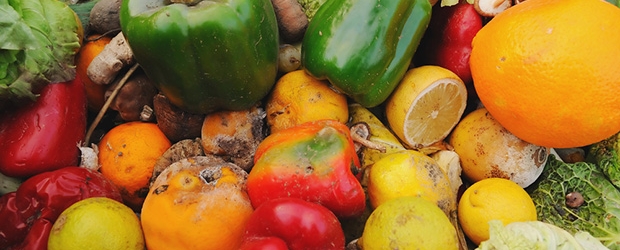New Best Practices Guide Helps Food Industry Reduce Food Waste

Washington, D.C. November 3, 2015 The Food Waste Reduction Alliance (FWRA) has released an updated guide with practical steps and examples to help food manufacturers, food retailers and restaurants cut food waste.
The second annual Best Practices and Emerging Solutions guide highlights ways companies can begin or expand their food donation or food waste diversion programs.
Compiled by FWRA, a cross-sector industry initiative led by the Food Marketing Institute (FMI), the Grocery Manufacturers Association (GMA) and the National Restaurant Association (NRA), the guide focuses on strategies food manufacturers, retailers and restaurant and foodservice operators can employ to keep food out of landfills, and to reduce food waste at the source.
Read About Food Waste
“The real value this project offers is the perspective of industry – compiled by companies for companies,” noted Christy Cook, Director Sustainability Performance and Field Support, for Sodexo, whose efforts in food waste reduction are highlighted in this year’s guide.
“It shares industry successes and suggestions around how to overcome potential food donation obstacles such as liability issues, transportation constraints and insufficient storage and refrigeration at food banks. It also highlights ways to recycle food waste such as recovering energy from food waste materials and redirection of organic materials,” she added.
The guide is filled with case studies, model practices and emerging solutions compiled across hunger relief and waste management sectors and includes more than 30 member companies throughout the food chain. Some examples of these success stories include:
The Campbell Soup Company’s partnership with the Food Bank of South Jersey and the NJ agricultural community in which undersized peaches headed for landfill were given new life as shelf-stable peach salsa. Just Peachy is sold at retail with proceeds benefitting the Food Bank of South Jersey.
ConAgra Foods, Inc.’s strategy to change the way they transition from one pudding flavor to another in a manufacturing facility by creating blended flavors rather than waste product while flushing the manufacturing line from one flavor to another. The mixed-flavor pudding is now donated, reducing manufacturing loss and getting food to those in need.
Dramatic reductions in food waste seen by food service operators such as Aramark Corporation and Sodexo just by getting rid of trays in dining halls and cafeterias.
Darden Restaurants’ and Yum! Brands’ partnership with the Food Donation Connection to establish the Darden Harvest and Yum! Harvest programs which coordinate food donations to food banks and other charitable organizations as an alternative to discarding prepared foods.
Supermarkets such as Hannaford Supermarkets and Weis Markets, Inc. are making strides in improvements to their food donation programs, enabling them to share best practices helping others to do the same.
“Approximately 80 billion pounds of food waste is discarded in U.S. landfills each year and the issue is now getting national attention following the announcement of USDA and EPA’s first-ever national food waste reduction goals in September,” said Patti Olenick, Sustainability Manager for Weis Markets, Inc.
“In order to achieve a 50-percent reduction by 2030, corporations everywhere will be looking to do their part. This guide should be the first step they take.”
To access the 2015 Best Practices Guide, click here.
For more information on the Food Waste Reduction Alliance, click here.



